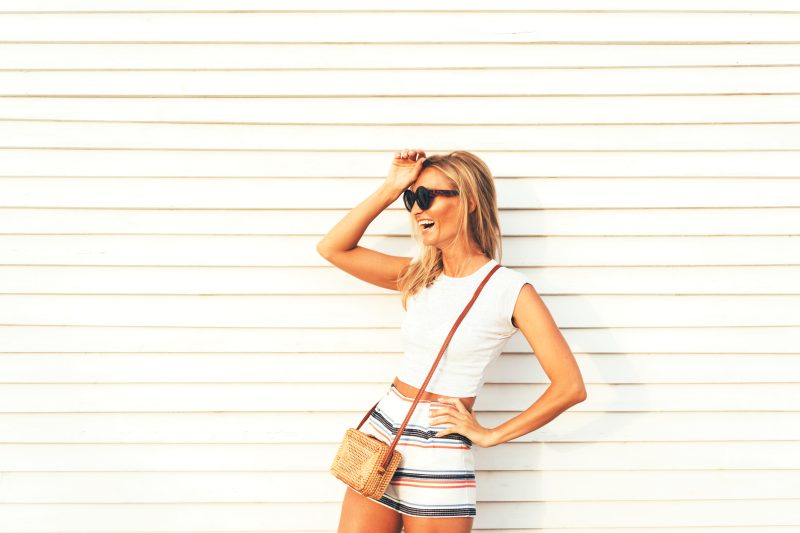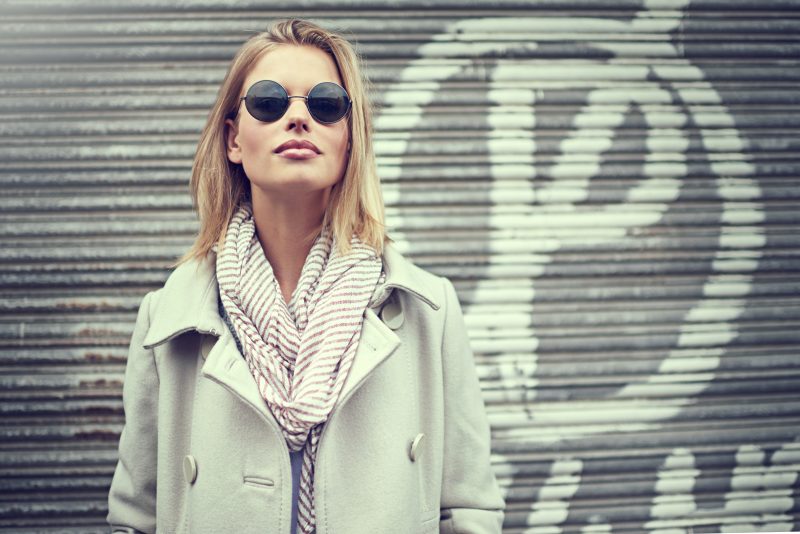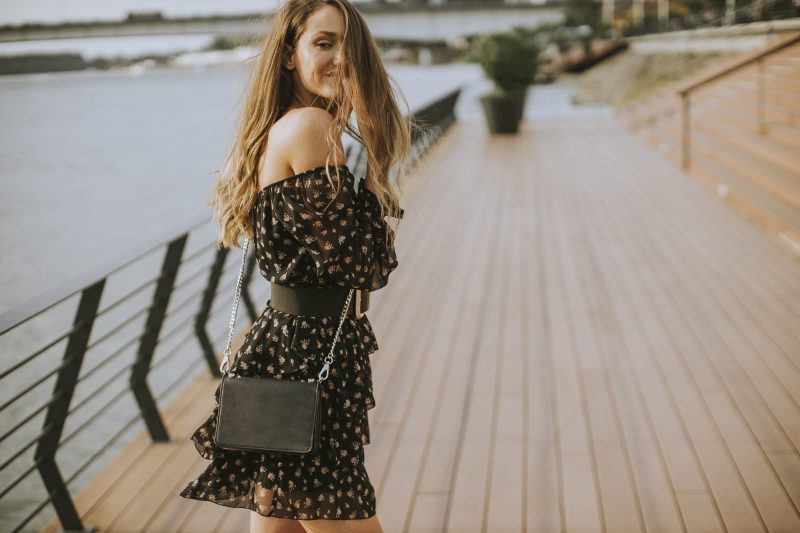Two weeks ago, I was sitting at a beachfront bar in Montauk, nursing an overpriced mezcal cocktail and waiting for my friend Emma to arrive, when I spotted her. A woman in her early thirties strolling barefoot along the shoreline as the sun was setting. She was wearing a flowing white linen dress—classic coastal—but paired with a distressed denim jacket adorned with Western-style embroidery and, I kid you not, a white cowboy hat. Around her neck was a delicate gold chain with tiny seashell charms, and on her wrist, a stack of friendship bracelets alongside what appeared to be a turquoise cuff.
She looked like she’d walked straight out of a Nancy Meyers movie, if that movie were set at a luxury dude ranch.
“What the hell is happening?” I muttered into my drink, as two more women walked by in similar getups—one in a prairie-style dress with cowboy boots she was carrying rather than wearing on the sand, another in a crochet halter top with a concho belt slung low on her hips.
By the time Emma showed up (twenty minutes late, as is her custom), I had counted seven distinct “coastal cowgirl” looks and finished my drink in a state of confused fascination.
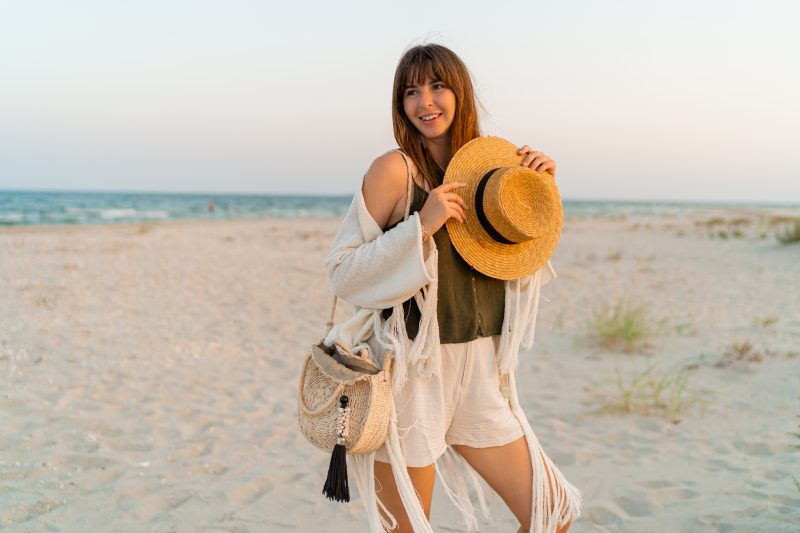
“You’re not going to believe this,” I started, but Emma cut me off.
“The Western beach trend? Yeah, I’m wearing it right now,” she said, gesturing to her outfit—a breezy blue sundress I’d seen her wear a million times, but now paired with a braided leather belt, turquoise earrings, and what I can only describe as fancy Wrangler denim jacket. “Got the jacket vintage. Isn’t it amazing?”
That’s when I knew this wasn’t just a Montauk anomaly. If Emma—a die-hard minimalist whose closet is essentially a monument to beige—was embracing cowgirl touches, something major was happening. As a fashion editor, I’ve developed a sixth sense for these things. Call it trend intuition, or just the result of spending way too many hours analyzing what people wear on various coastlines over the past decade.
“When did this start?” I asked her, signaling to the bartender for another round. This conversation clearly required more mezcal.
“It’s been building all spring,” Emma said with authority. “Started with the turquoise jewelry coming back. Then the Western boots with sundresses. Now it’s full-on cowgirl coastal. I blame TikTok. And maybe Beyoncé. Definitely Beyoncé.”
On the flight back to the city, I did what any self-respecting fashion journalist would do: I fell down an internet rabbit hole researching this aesthetic collision that seemed to have materialized out of nowhere. By the time we landed, my Notes app contained approximately 3,000 words of fashion analysis, and my Instagram saved folder was filled with evidence.
Coastal cowgirl (not to be confused with its cousin Western coastal, which is heavier on the ranch, lighter on the beach) appears to have emerged from the perfect storm of post-pandemic wanderlust, the ongoing coastal grandmother obsession, and America’s cyclical fascination with Western wear, which resurfaces with the reliability of a fashion Old Faithful about every seven years.
The origins are surprisingly traceable. Early iterations appeared at Coachella last year, where festival-goers paired crochet tops and flowy skirts with Western boots and concho belts. By fall, influencers were experimenting with mixing turquoise jewelry into their otherwise beach-y accessories. But the trend didn’t fully coalesce until this spring, when several key celebrity appearances pushed it into the mainstream.
There was Gigi Hadid spotted in Malibu wearing a white linen set with a denim jacket and a straw cowboy hat. Taylor Swift posted an Instagram carousel from a beach vacation featuring a prairie dress and cowboy boots carried in hand. And yes, Beyoncé herself performed at a private event in the Hamptons wearing a custom look that could only be described as luxury rancher meets seaside heiress.
And just like that, the algorithm took over. #CoastalCowgirl currently has over 78 million views on TikTok. Online searches for “Western beach style” increased by 320% between January and May, according to retail analytics firm StyleScan. And Etsy reported a 175% increase in searches for “cowboy coastal decor,” which I didn’t even know was a thing but apparently involves a lot of rope accents and driftwood signs painted with ranch slogans.
“It’s the ultimate American fantasy mash-up,” explained Dr. Elaine Chen, professor of fashion sociology at Parsons, when I called her to make sense of this phenomenon. “Coastal living represents leisure, luxury, and a certain East Coast old money aesthetic. Western wear symbolizes rugged individualism, nostalgia for the frontier, and a romanticized version of American heritage. Put them together, and you’ve created a fantasy lifestyle that feels both aspirational and somehow patriotic.”
Patriotic fashion fantasies aside, the trend is absolutely everywhere. Last weekend, I ventured out to the Rockaways to see if the coastal cowgirl had made it to New York’s beaches. She had, in full force. Straw cowboy hats outnumbered traditional sun hats three to one. Western boots were carried in beach totes, presumably to be put on for boardwalk strolls and beachfront dining. I counted at least a dozen prairie dresses blowing in the ocean breeze, paired with shell anklets and leather bracelets.
“I just think it’s fun,” said Mia, a 28-year-old graphic designer I approached while waiting in line for tacos. She was wearing a white eyelet sundress with a tooled leather belt and turquoise rings on every finger. “It’s like, beachy but with character? I was getting bored with just the all-white coastal thing.”
“I grew up in Texas but live in Brooklyn now,” explained Zoe, a 35-year-old art director sporting denim cutoffs with a flowing kimono and a silver concho belt. This is the first trend that’s let me embrace both sides of my style personality without feeling like I’m wearing a costume.”
That seems to be a common sentiment—coastal cowgirl allows for a playfulness that purely coastal styles, with their restrictive neutral palettes and precious linens, sometimes lack. It’s less precious, more personality-driven. And crucially, it can be adapted to various comfort levels, from subtle nods (a turquoise necklace with your white linen dress) to full commitment (prairie dress, cowboy hat, boots, the works).
Retailers have noticed, of course. Anthropologie’s summer collection features no fewer than three “prairie beach dresses” (their term, not mine). Free People has an entire section dedicated to “Western Resort Wear.” Even J.Crew, bastion of East Coast prep, has incorporated subtle Western details into their summer line, with stitched denim pieces and braided leather accessories paired with their classic coastal silhouettes.
“We’ve seen tremendous response to these crossover pieces,” admitted Sophie Torres, buyer for a major department store who agreed to speak with me on condition I not name her employer. “The Western-influenced items are selling 40% faster than traditional resort wear. We’ve had to reorder the cowboy hats three times already, and it’s only June.”
What’s particularly interesting about this trend is how it’s manifesting differently across generations. Gen Z is going all-in with highly Instagrammable, statement-making versions: think prairie dresses with cowboy boots, oversized turquoise jewelry, and visible concho belts. Millennials are taking a more subtle approach, incorporating just one or two Western elements into otherwise coastal outfits—maybe a denim jacket with Western stitching over a simple white dress, or a braided leather bracelet with shell charms. And even the coastal grandmother demographic is participating, with elegant older women at East Hampton beaches adding touches of silver and turquoise to their linen ensembles.
“It works because both aesthetics actually share core values,” explained stylist Miguel Reyes, who’s been putting clients in coastal cowgirl looks for summer editorials. “Both are deeply nostalgic. Both romanticize American lifestyles most people don’t actually live. And both center on natural materials—cotton, linen, leather, straw. The textural conversation makes sense.”
If you’re tempted to experiment with the trend yourself (and judging by my inbox full of “How do I wear this?” queries, many of you are), here’s my advice for navigating coastal cowgirl territory without looking like you’re wearing a costume:
Start with accessories. A braided leather belt with a simple buckle adds Western texture to any sundress without screaming “rodeo.” Same goes for a single piece of turquoise jewelry or a denim jacket with subtle Western stitching. These pieces play well with classic coastal items and can be easily integrated into your existing summer wardrobe.
Pay attention to materials. The best coastal cowgirl looks feature natural fabrics exclusively—cotton, linen, straw, leather, denim. Anything synthetic immediately pushes the aesthetic into costume territory. This isn’t the place for polyester prairie dresses or plastic beaded Western belts.
Color is crucial. Stick to a palette that makes sense for both aesthetics: whites, creams, and blues work beautifully, as do earth tones like terracotta and sage green. Turquoise is the statement color of the trend, best used in accessories rather than all-over pieces. Avoid neon or overly saturated colors, which read more festival than sophisticated style mash-up.
Consider your location. The intensity of your coastal cowgirl look should probably correspond to your setting. A subtle version with just turquoise accessories works for Northern beaches like Nantucket or the Hamptons, while southern coastal spots like Tybee Island or Gulf Shores can handle the full prairie dress and cowboy hat combo. Read the room (or beach).
Last weekend, I finally decided to dip my own toe into coastal cowgirl waters. I packed for a friend’s beach house in the Hamptons with uncharacteristic indecision, eventually settling on my standard white linen sundress but pairing it with a vintage tooled leather belt I found at a thrift store in Williamsburg and turquoise drop earrings. Baby steps.
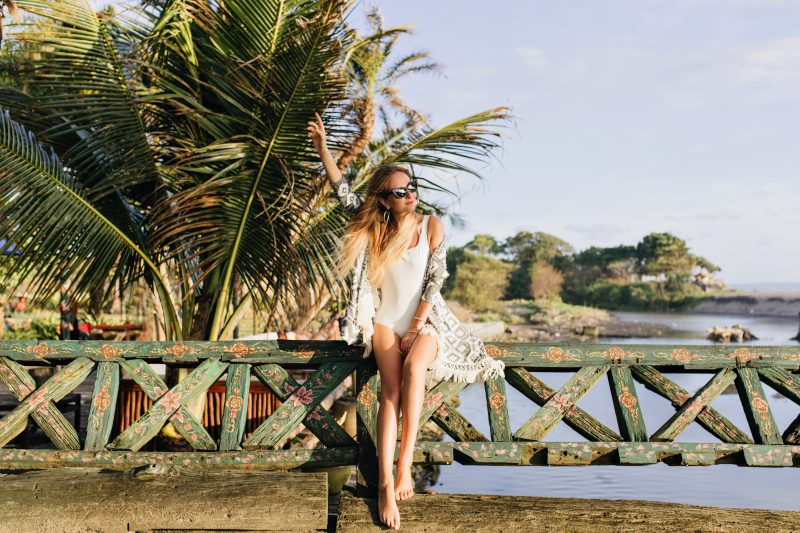
“Is this too much?” I texted Emma, sending a mirror selfie.
“Not enough,” she replied. “Add the denim jacket I know you have.”
She was right, of course. The jacket made the look intentional rather than accidental.
Walking along the beach that evening, I felt both comfortable and slightly more interesting than in my usual all-white coastal uniform. A woman actually stopped me to ask where I got my belt. “Vintage,” I told her with newfound coastal cowgirl confidence.
Will this trend have staying power beyond this summer? Fashion history suggests Western influences are cyclical but temporary, while coastal aesthetics have more longevity. My prediction is that by next summer, we’ll see the Western elements soften and become more integrated—less prairie dress, more subtle stitching details and enduring turquoise jewelry paired with coastal staples.
But for now, coastal cowgirl is having its well-deserved moment in the sun. It’s bringing some much-needed personality and playfulness to beach style, which, let’s be honest, was getting a little too precious and homogeneous. There’s something delightfully American about this aesthetic collision—it’s like Route 66 finally reached the Atlantic and decided to stay awhile.
Just please, I beg you, don’t wear your cowboy boots on the actual sand. Some lines still shouldn’t be crossed, no matter how cute the Instagram opportunity might be. Trust me, your boots (and the people watching you struggle to walk in them) will thank you.
